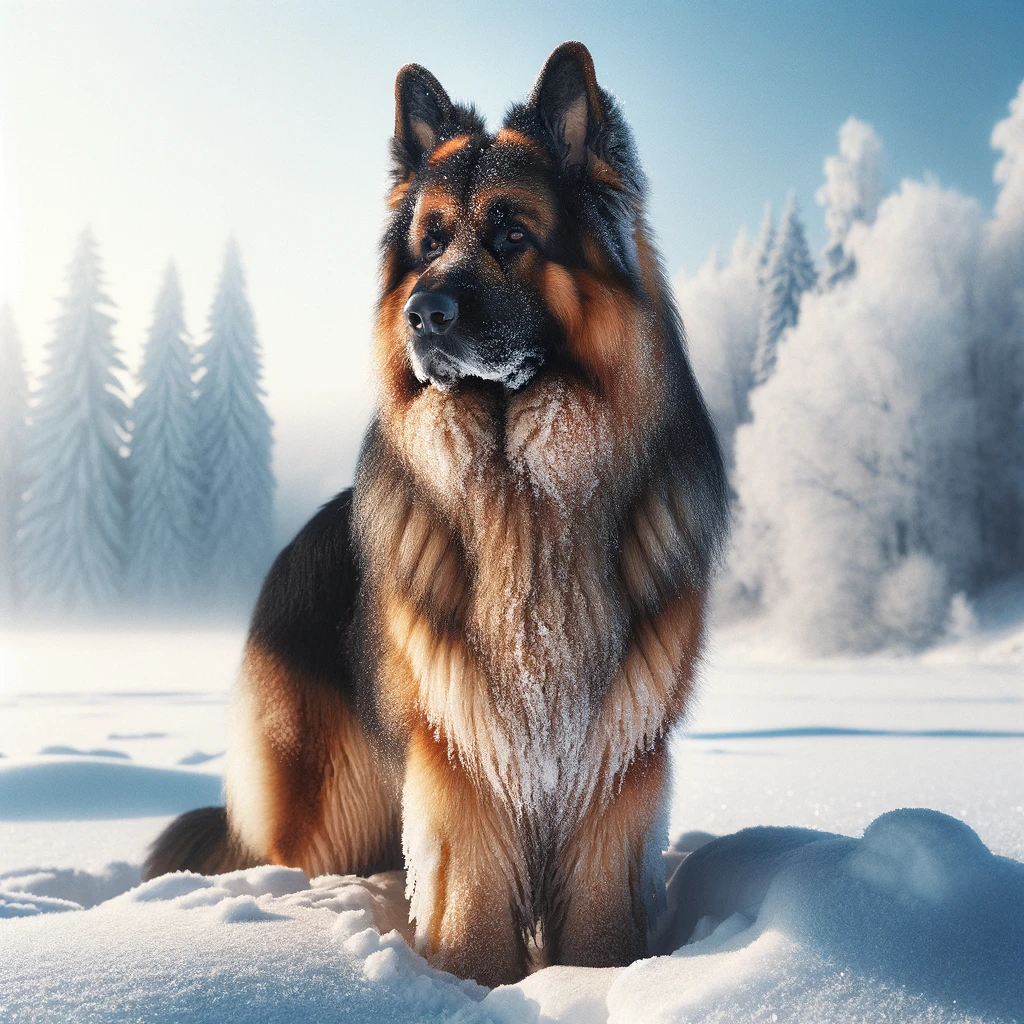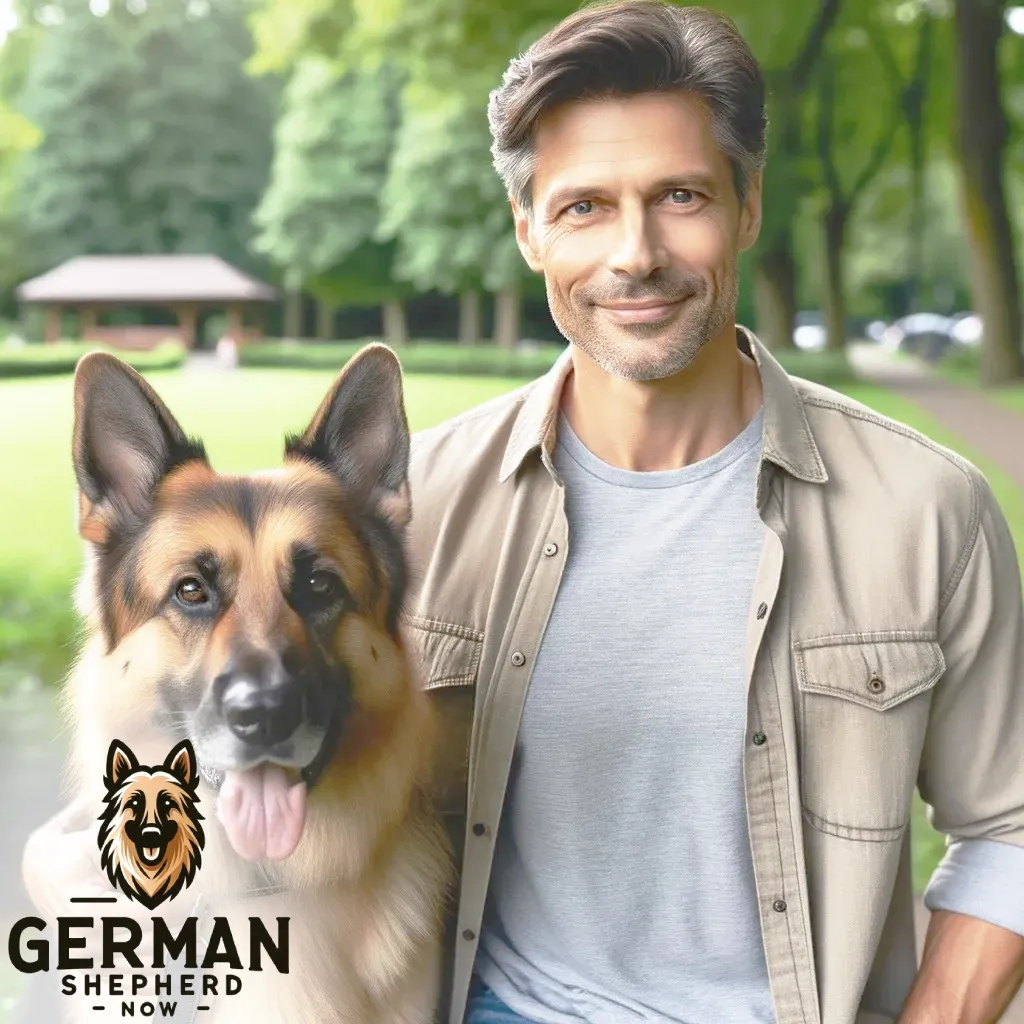What’s The Lowest Temperature a German Shepherd Can Withstand
German Shepherds can generally withstand temperatures as low as -20 degrees Fahrenheit (-29 degrees Celsius)
Temperatures below 20 degrees Fahrenheit (-6 degrees Celsius) are dangerous.

Understanding German Shepherd Cold Tolerance
| Category | Details |
| Lowest Tolerable Temperature | German Shepherds can generally withstand temperatures as low as -20 degrees Fahrenheit (-29 degrees Celsius). |
| Dangerous Temperature Threshold | Temperatures below 20 degrees Fahrenheit (-6 degrees Celsius) are dangerous for German Shepherds. |
| Effect of Cold on Dogs | In cold weather, dogs use more energy to maintain body temperature, leading to potential fatigue, discomfort, and hypothermia. Smaller dogs or those with thinner fur are more susceptible to cold, whereas larger breeds with thick coats are better insulated. Paw pads offer limited protection from frozen ground. |
| Optimal Temperature Range | German Shepherds thrive in temperatures between 50-80°F (10-27°C). Their double coat allows them to handle dips to 30°F (-1°C) comfortably. Limit exposure below 32°F (0°C) to 30 minutes. Exercise caution above 80°F, ensuring water and shade access. |
| Surviving Frigid Extremes | German Shepherds can endure short-term exposure to temperatures down to -20°F (-29°C), thanks to genetic adaptations from their heritage as a German herding breed. Precautions are still necessary in extreme cold. |
| Fur Attributes for Cold Resistance | The double coat, consisting of long, straight guard hairs and a dense, wooly undercoat, provides insulation and water resistance. German Shepherds shed their undercoat biannually, adapting to seasonal changes. |
| When Conditions Turn Dangerous | Avoid leaving German Shepherds unattended in temperatures below 20°F (-6°C) for over 8 hours. Limit exposure between 20-30°F (-6 – -1 °C) to 1-2 hours. |
| Signs of Cold Stress | Watch for shivering, lethargy, whining, seeking shelter, lifting paws from cold ground, and curling up for warmth as signs of cold stress. |
| Breed Variations in Cold Tolerance | Individual variations in age, health, fur density, activity level, and sub-breed lineage affect cold tolerance. Elderly, young, or sick dogs should have limited cold exposure. Long-haired variants, with thicker fur, offer better insulation but require more grooming. |
| Winter Activity & Nutrition | Over 2 hours of daily activity is recommended in winter. Activities like sledding, hiking, and playing help maintain core temperature. High-protein and high-fat diets are beneficial in colder months to fuel heat generation and muscular work. |
| Monitoring Your German Shepherd | Despite the breed’s resilience, individual German Shepherds need monitoring in cold weather. Responsible pet ownership involves recognizing the dog’s signals and ensuring they remain comfortable and healthy in winter. |
How Cold Temperatures Affect Dogs
To understand how well German Shepherds can tolerate cold weather, it’s essential to consider how low temperatures can affect dogs in general.
When exposed to cold, dogs use more energy to maintain their body temperature, leading to fatigue, discomfort, and even hypothermia if their temperature drops too much.
Smaller dogs and those with thinner fur are more likely to struggle in colder environments, while larger breeds with thick hair can better conserve heat.
It’s worth noting that a dog’s paw pads offer little protection from frozen ground, so it’s a good idea to use booties to prevent ice, salt, and chemical burns on their feet.
Any temperature below 32°F (0°C) warrants caution and monitoring when dogs are kept outside for over 30 minutes.
But due to their physical adaptations, German Shepherds have an exceptional tolerance well below this.
The Optimal Temperature Range for German Shepherds
While German Shepherds can endure freezing conditions, they thrive best in more moderate temperatures.
German Shepherds generally do well in ambient air temperatures between 50-80°F (10-27°C).
Their double-coat system allows them to handle temperature dips to 30°F (-1°C) comfortably through insulative fur and a wooly undercoat.
Limiting their time below 32°F (0°C) to 30 minutes is best.
At warmer temperatures from 65-80°F (18-27°C), most German Shepherds show no signs of heat or cold stress.
Be cautious about allowing strenuous exercise above 80°F, provide ample water, and ensure access to shade.
Surviving Frigid Extremes Down to -20°F
Amazingly, German Shepherds can tolerate short-term exposure to bitter cold down to -20°F (-29°C) when necessary.
Their resilience originates from genetic adaptations honed as a rugged German herding breed. Safe precautions should still be taken in extreme cold.
Fur Attributes Offering Cold Resistance
A German Shepherd’s double coat accounts for much of their ability to thrive in cold conditions.
Their outer guard hairs are long, straight, and thick to repel snow, ice, and wind. Underneath lies a dense, wooly undercoat offering superb insulation.
Additionally, German Shepherds “blow” their undercoat twice per year. Shedding this thick sub-fur allows their coat to regulate based on seasonal weather patterns. Their fur is also water-resistant, offering protection from moist winter conditions.
When Conditions Turn Dangerous
Despite their cold hardiness, German Shepherds should never be left unattended in dangerously frigid weather for long periods.
If possible, they should avoid temperatures below 20°F (-6°C) for over 8 hours. Between 20-30°F (-6 – -1 °C), limit outdoor exposure to 1-2 hours maximum.
Common Signs of Cold Stress
Be vigilant for signals your German Shepherd suffers from uncomfortable or dangerous cold exposure. Warning signs include:
- Shivering
- Lethargy
- Whining or discomfort
- Seeking warm shelters
- Lifting paws off frozen ground
- Curling up to conserve warmth
Breed Variations in Cold Tolerance
While German Shepherds handle cold exceptionally well overall, individual variances exist. Age, health, fur density, activity level, and sub-breed lineage impact cold hardiness.
Elderly, very young, or sick German Shepherds should spend less time in the cold. Malnourishment or medical conditions also reduce tolerance.
Long-haired German Shepherds, a recessive variant, have thicker fur insulation for withstanding record-low temperatures. However, increased grooming is needed to prevent matting and discomfort.
Increasing Activity & Calories in Winter
While their coats allow German Shepherds to relax comfortably in cold temps, light activity helps them generate essential body heat. Their high exercise needs don’t change in winter.
Aim for over 2 hours of daily activity, even in frigid conditions. Sledding, hiking, running, and playing games utilize energy to maintain their core temperature. Weakness or fatigue can indicate hypothermia risk.
Additionally, the best winter nutrition for German Shepherds consists of high-protein and high-fat kibble or raw food diets. Their digestive system requires more calories in cold months to fuel muscular work and heat generation.
Knowing When It’s Too Cold for Your German Shepherd
German Shepherds, as a breed, can withstand impressive low temperatures. Individual dogs still need monitoring and care when spending long periods below 32°F (0°C).
Pay close attention to your German Shepherd’s signals, no matter their toughness in cold climates. Ultimately, it comes down to responsible pet ownership to keep your dog happy and healthy all winter.

I’m Martin, and I grew up in the super cool city of Seattle. You know, the place with all the incredible mountains and forests? Yeah, that’s my playground!
Ever since I was little, I’ve been all about nature. I used to wander around the woods with a notebook, doodling all the cool plants and animals I’d find.
